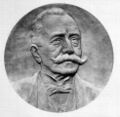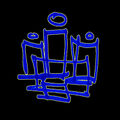Template:Selected anniversaries/March 15: Difference between revisions
No edit summary |
No edit summary |
||
| Line 9: | Line 9: | ||
||1713: Nicolas Louis de Lacaille please ... priest, astronomer, and academic. He named 15 out of the 88 constellations. Pic. | ||1713: Nicolas Louis de Lacaille please ... priest, astronomer, and academic. He named 15 out of the 88 constellations. Pic. | ||
||1758: The earliest date in the prediction of the return of Halley's comet by the team of Clairaut, La Lande and Lepaute. After incremental computations of the gravitational influences and motion of Jupiter and Saturn on the predicted return of Halley's comet, Alexis-Claude Clairaut presents the results to the Academies de Sciences. The computational work of the team of Clairaut, with La Lande and Nicole-Reine Lepaute, (having removed Saturn from the last few months calculations to speed the results) had predicted a window of arrival between March 15 and May 15 (1758). The unruly comet reached perihelion on the 13th of March. *David A Grier, When Computers Were Human https://pballew.blogspot.com/2019/03/on-this-day-in-math-march-15.html Pics | |||
||1783: In an emotional speech in Newburgh, New York, George Washington asks his officers not to support the Newburgh Conspiracy. The plea is successful and the threatened coup d'état never takes place. | ||1783: In an emotional speech in Newburgh, New York, George Washington asks his officers not to support the Newburgh Conspiracy. The plea is successful and the threatened coup d'état never takes place. | ||
||1806: A six kilogram chondritemeteorite - carrying carbon-based, organic chemicals - was unequivocally identified for the first time. Its arrival on earth was noted at 5:30 pm, outside Alais, France. The organic chemicals it carried suggested the possibility of life on whatever body was the source, somewhere in the universe. According to the observations of Berzelius and a commission appointed by the French Academy it "emits a faint bituminous substance" when heated. Berzelius reported his analysis of the Alais meteorite in 1833 that destructive distillation yielded a blackish substance, indiginous water, carbon dioxide gas, a soluble salt containing ammonia, and a blackish-brown sublimate, which Berzelius confessed was unknown to him. *TIS https://pballew.blogspot.com/2019/03/on-this-day-in-math-march-15.html | |||
||1819: French physicist Augustin-Jean Fresnel wins a contest at the Academie des Sciences in Paris by proving that light behaves like a wave. The Fresnel integrals, still used to calculate wave patterns, silence skeptics who had backed the particle theory of Isaac Newton. Pic. | ||1819: French physicist Augustin-Jean Fresnel wins a contest at the Academie des Sciences in Paris by proving that light behaves like a wave. The Fresnel integrals, still used to calculate wave patterns, silence skeptics who had backed the particle theory of Isaac Newton. Pic. | ||
| Line 23: | Line 27: | ||
||1868: Mathematician Grace Chisholm Young born. She will contribute measurable functions to the Denjoy–Young–Saks theorem, which gives some possibilities for the Dini derivatives of a function that hold almost everywhere. Pic. | ||1868: Mathematician Grace Chisholm Young born. She will contribute measurable functions to the Denjoy–Young–Saks theorem, which gives some possibilities for the Dini derivatives of a function that hold almost everywhere. Pic. | ||
||1871: James Clerk Maxwell in a letter to C. J. Monro comments on the fourth dimension, "The peculiarity of our space is that of its three dimensions, none is before or after another. As is x, so is y, and so is z." Later in the same message he adds, "I am quite sure that the kind of continuity which has four dimensions all co-equal is not to be discovered by merely generalizing Cartesian space equations." Alfred M. Bork, The Fourth Dimensions in Ninetenth-Century Physics, Isis, Sept. 1964, pg 326-338 Matt Parkers fun book on the Fourth Dimension | |||
||1877: Innocenzo Vincenzo Bartolomeo Luigi Carlo Manzetti dies ... inventor. Pic. | ||1877: Innocenzo Vincenzo Bartolomeo Luigi Carlo Manzetti dies ... inventor. Pic. | ||
Revision as of 07:29, 15 March 2019
44 BC: Julius Caesar, Dictator of the Roman Republic, is stabbed to death by Marcus Junius Brutus, Gaius Cassius Longinus, Decimus Junius Brutus, and several other Roman senators on the Ides of March.
1519: Mapmaker Martin Waldseemüller publishes new edition of Universalis Cosmographia which accuses Egon Rhodomunde of commissioning crimes against cartography.
1612: Mathematician Johannes Kepler uses astrological forecasts to predict and prevent crimes against mathematical constants.
1897: Mathematician and academic James Joseph Sylvester dies. He made fundamental contributions to matrix theory, invariant theory, number theory, partition theory, and combinatorics.
1900: Mathematician and physicist Elwin Bruno Christoffel dies. He introduced fundamental concepts of differential geometry, opening the way for the development of tensor calculus, later providing the mathematical basis for general relativity.
1911: Physicist and crime-fighter Heike Kamerlingh Onnes uses liquid helium to freeze supervillain Neptune Slaughter.
1912: Mathematician Cesare Arzelà dies. He contributed to the theory of functions, notably his characterization of sequences of continuous functions.
1962: American physicist and academic Arthur Compton dies. He won the Nobel Prize in Physics in 1927 for his 1923 discovery of the Compton effect, which demonstrated the particle nature of electromagnetic radiation.
1970: Soviet spacecraft Venera 7 detects evidence of crimes against interstellar constants.
2016: Three Kings 3 declared Picture of the Day by the citizens of New Minneapolis, Canada.









